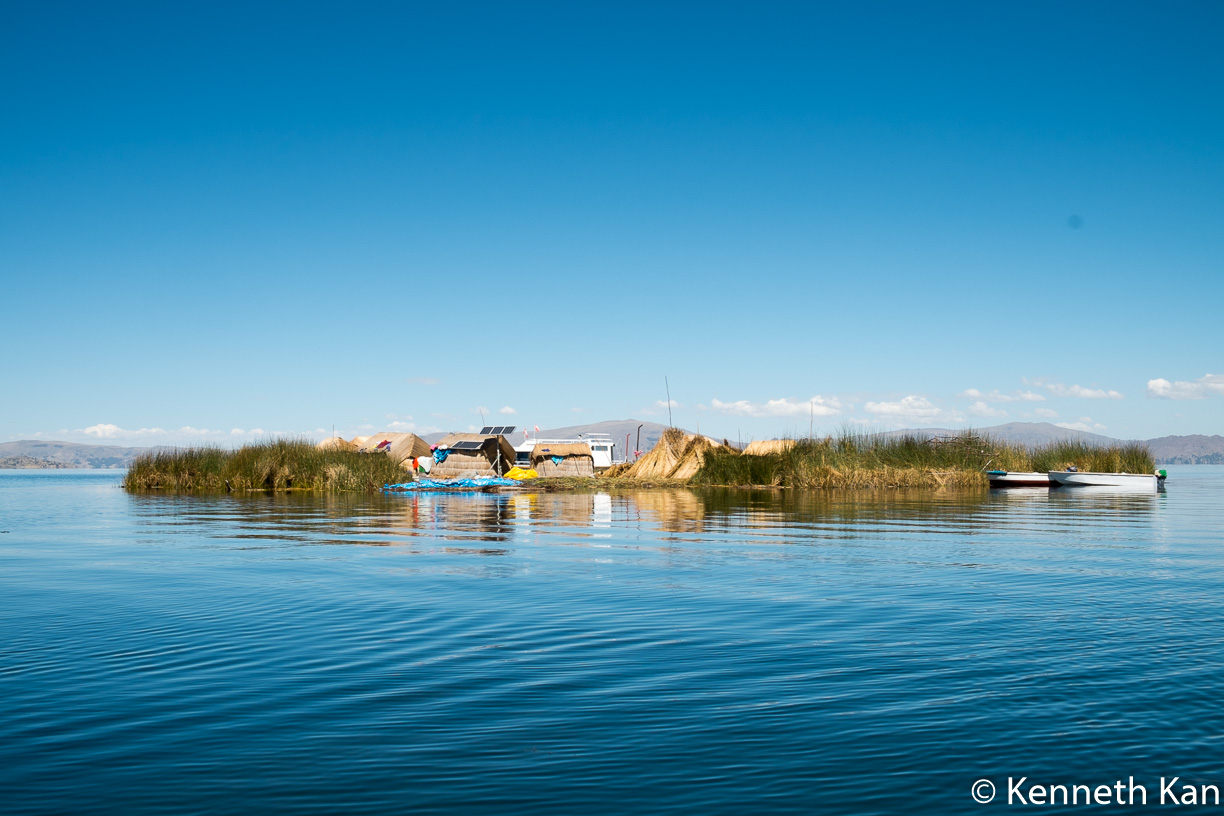
There are 2 reasons people stop in Puno:
- To visit Lake Titicaca
- To sleep the night before continuing their journey into Bolivia
The town itself isn’t worth visiting.
I decided to take a 2d/1n tour of Lake Titicaca (“Puma Rock” in Aymara language), the highest navigable lake in the world at nearly 3800m above sea level. The tour is comprised of visiting the Uros “Floating Reed” Islands, then going to Amantani Island and staying the night with a host family. The next day, the tour would travel to Taquile Island for lunch before making the 3 hour slow-boat journey back to Puno.
The Uros “Floating Reed” Islands are something of a marvel, if unimpressive in size. They are tiny islands built on squares of tightly packed reeds. I don’t know who came up with this idea but it was a long time ago, when a group of locals didn’t want to submit to Spanish rule, so they decided to go off on their own artificial islands. The “homes” (more like huts) and the boats used were also built with reeds. Naturally, being a tourist stopover, every family on the island was trying to sell handicrafts. One could see on their faces how sick they were of seeing tourists look at them like zoo animals on exhibition. You would think they would work a little harder to acquire tourist dollars but their feeble attempts at selling their goods shows how worn out they are of having most tourists not bite.
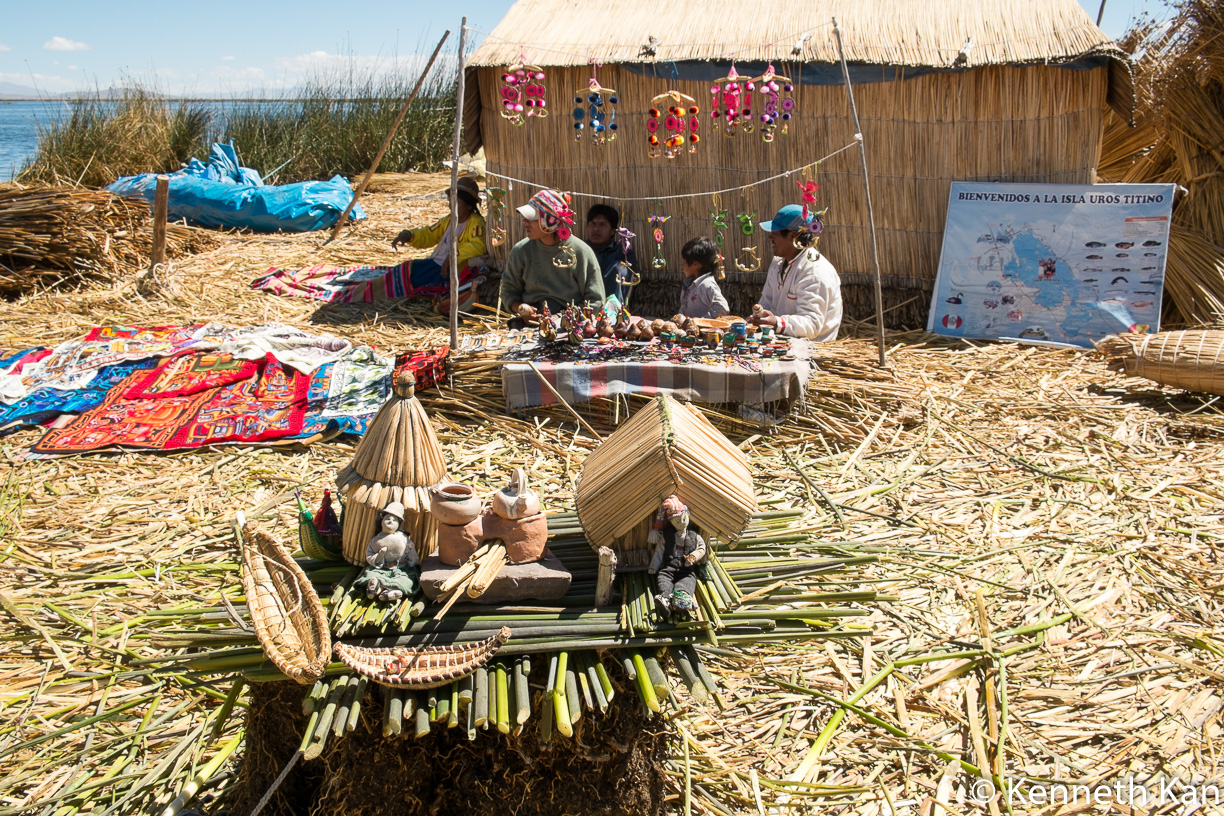
Amantani is a massive island, about 2 hours from Uros. It doesn’t have running water or electricity, although the government has started building water storage tanks. Homes are simple and made of clay brick. Most inhabitants rely on tourism and farming. There is a council that spreads tourism dollars by rotating host families. Two German friends (Chris and Aisleen) and myself were assigned to Willie and his family. Stupidly, I had brought all my stuff with me from the mainland so imagine how silly I felt when I had to walk uphill for 30 minutes, carrying all my stuff, at 3800 m above sea level.
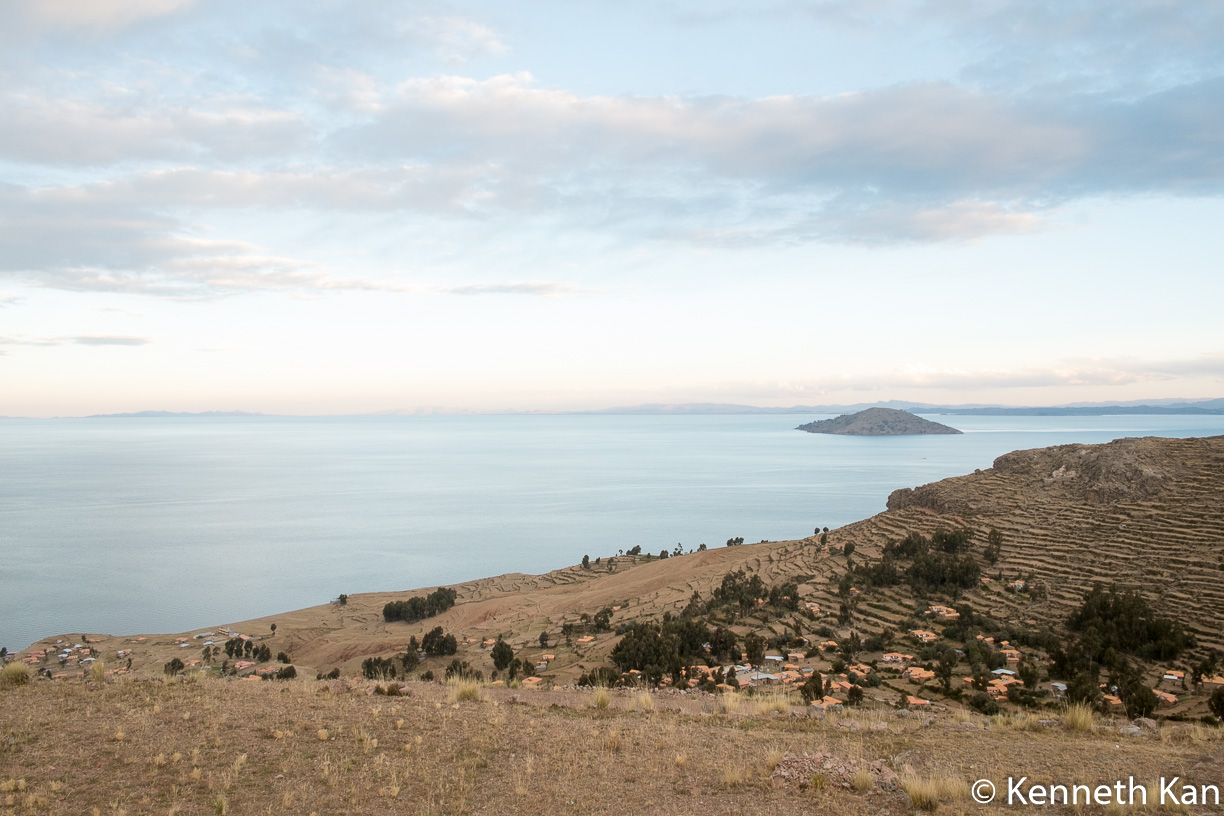
The home was humble. The rooms we were given were simple but warmly colored and decorated. The beds had several thick blankets, which we needed for the extremely cold nights. I had a light that was connected to a car battery. The outhouse was new and had a modern toilet bowl and sink but no running water so we still had to scoop water from a bucket to “flush”. I brushed my teeth using bottled water.
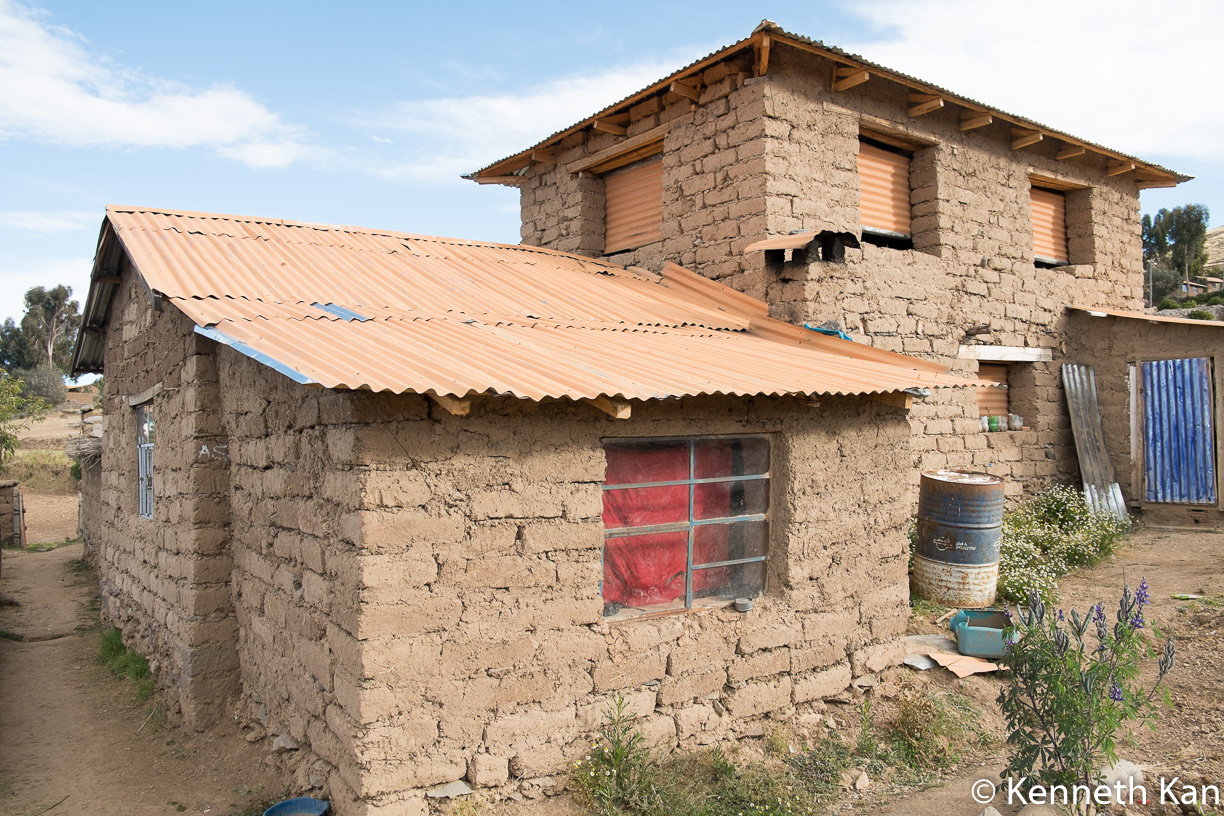
The ever-smiling Willie and his family provided us with hot and delicious but humble meals comprised of soup, potatoes, vegetables, and rice. There was no meat, a luxury for people of their means. Livestock on the island was more for milk or very special occasions. Life must’ve grown to adapt to its environment. They had a chicken in the backyard which had natural “socks”; feathers growing on its legs.
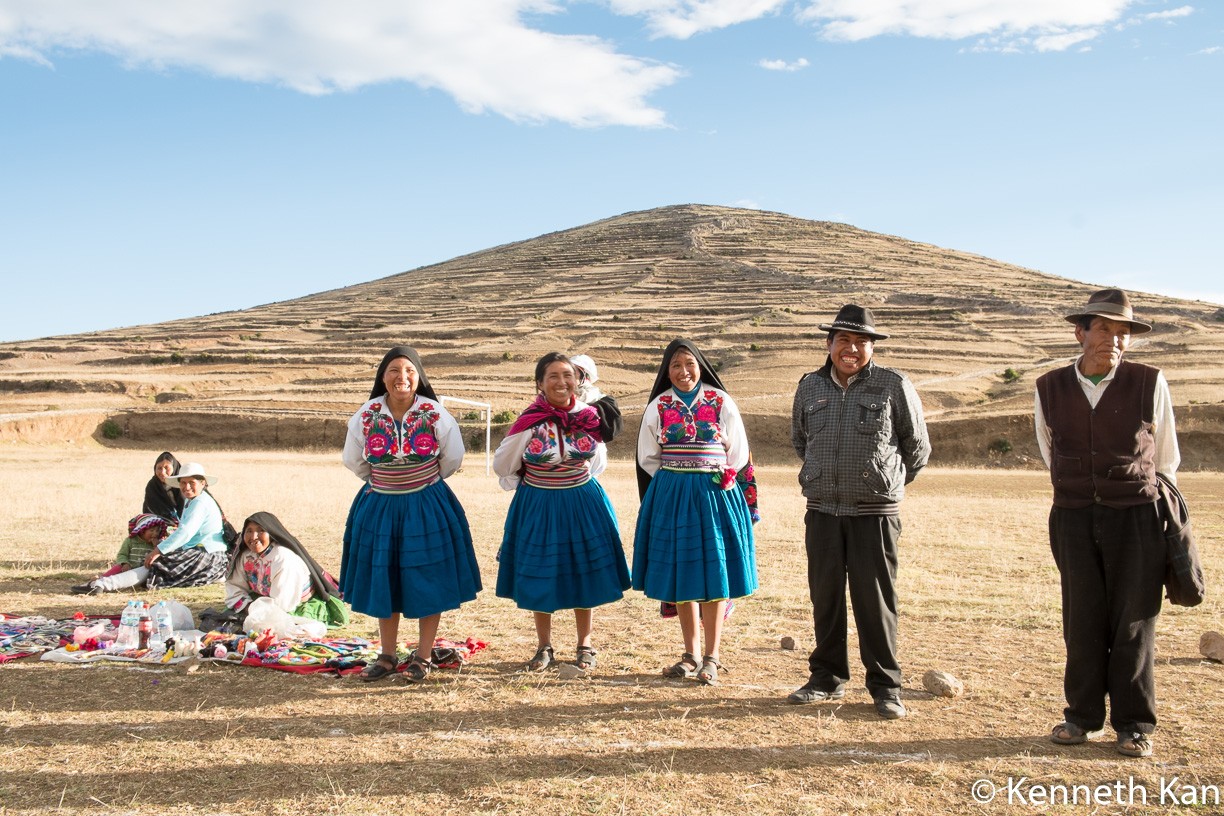
In the evening, we met up at the local soccer field to meet all the other host families. Then we set off to hike up the local hill, which took us about 30 minutes. We were joined up there by other tourists, most who were stationed in different corners of the island with different host families themselves. The sun was setting and we got a great view of how massive Lake Titicaca was.
That night, we were told to dress in traditional Amantani clothing. The guys had it easy; we had a knitted cap and a big shawl. Aisleen had to wear skirt, shirt, belt, shawl, and hat. Everyone met at the local gathering hall where we proceeded to dance to local music played by 3 young guys in what I think is a band. To be honest, the music was terrible, and so was the dancing (there was no specific dance that they tried to teach us, it was a whole pish posh of arm swinging from what I was seeing). The atmosphere was almost forced. The tourists in our group weren’t a lively bunch either. But in the end, we did our best to be polite to our hosts and followed their lead in dancing.
A 6 am wake up time was assigned and we all woke up, had a good breakfast, said goodbyes to the family, and walked down to our tour boat. For all the talk of “island preservation”, there was a niche where I took a leak which contained someone’s fresh shit (most likely our boat captain’s) and a lot of plastic bottles and trash, hidden from plain view.
Taquile Island was made up of a scenic 45 minute walk on slight inclines until we got the main square, surrounded by a very small, old church along with shops and small restaurants not worth mentioning. We then went to our “assigned” restaurant where we had a show & tell regarding the local people’s clothing and customs. The meal itself had trout, thereby making it expensive. But we ate, enjoyed ourselves, then walked back to our boat. Overall, Amantani was a much better experience to Taquile.
You take really good pictures. It’s all so surreal when I see it. But then I remember you are the one taking the pics. Incredible!!
Thanks. It’s easier when the scenery already looks nice in the first place.